XAS and EXAFS Applications in Nanomaterials
XAS (and in particular EXAFS) is one of the best methods to characterize nanomaterials. Special examples at CAMD are:
- Time and Space resolution of the formation of Co nanoparticles using microfluidic reactors
- Characterizing The Local Structure Of Au98Ag46(SR)60nanoclusters with EXAFS – in theory (simulations) and experiment
In microfluidic reactors, nanoparticles can be generated and the reaction times, and therefore nanoparticle sizes, are proportional to distance the reactants have traveled in the reactor. For Co nanoparticle formation the scheme that we have studied is outlined in the center figure. The steps of nanoparticle formation can be observed in situ by repeatedly taking EXAFS spectra along the reaction coordinate.
Co Nanoparticle Formation
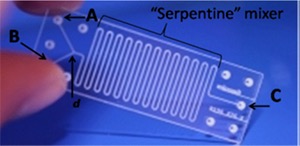
Microfluidic reactor for the synthesis of nanoparticles.
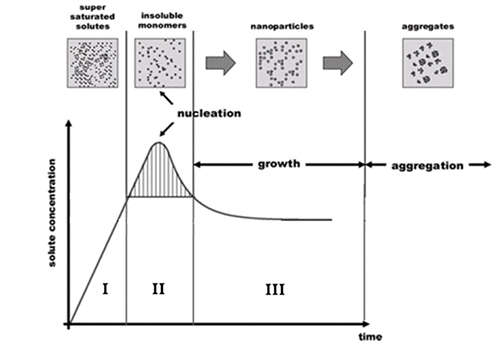
Scheme of nucleation and growth proposed by La Mer (La Mer V.K. and Dinegar R.H., J. Am. Chem. Soc., 72(11), 4847, 1950)
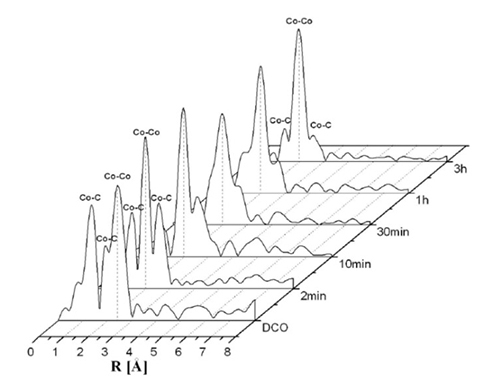
Au-Ag Core-Shell Nanoparticles
Simulations of EXAFS spectra using the FEFF code can reveal the structural differences in the distribution of the two metals Ag and Au in the complex nanocluster with a maximum of 144 atoms. The figure belowshows the different possible sites and the related EXAFS simulated spectra (r-space) for one structural setup. The summary of the spectra of these sites results in an overall EXAFS spectrum for the nanocluster. Comparing the results for all possible structural setups we see that the experimental data does not agree with these data.
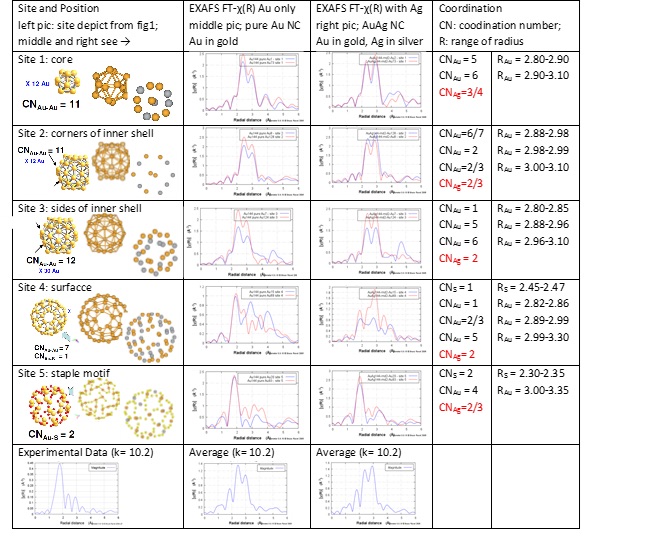
EXAFS simulations (using FEFF) of Au98Ag46(SR)60 nanoclusters assuming different settings for the silver/gold structure: This one:
Au/Ag randomly distributed in all sites/shells of the structure of 144 atoms.
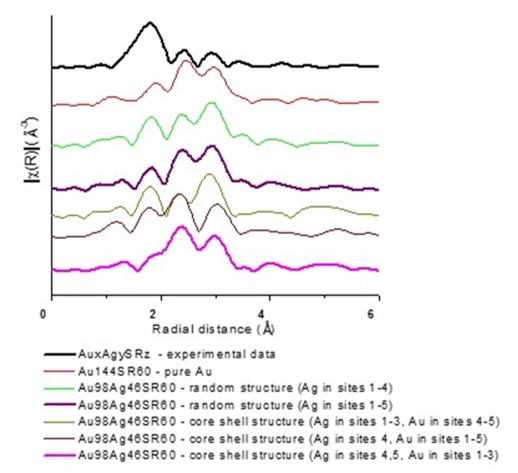
EXAFS simulations (using FEFF) of Au98Ag46(SR)60 nanoclusters - overview of the integrated FT-EXAFS spectra for all different structure
settings: no Ag (pure Au NP), random with and without Ag in the core, core shell structures
with Ag in the outer layers or Au in the outer layers, and the experimental data of
the particle to be deterimined.